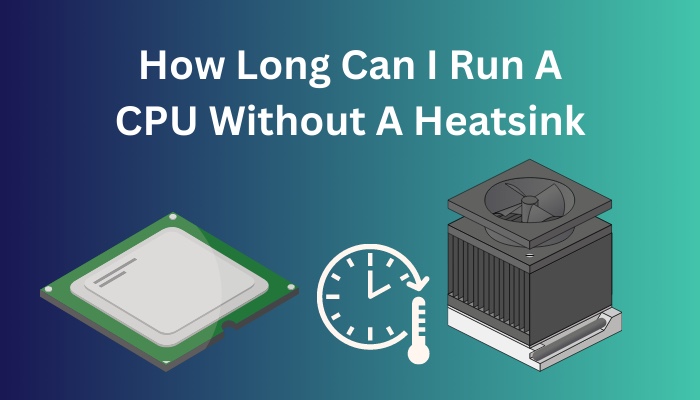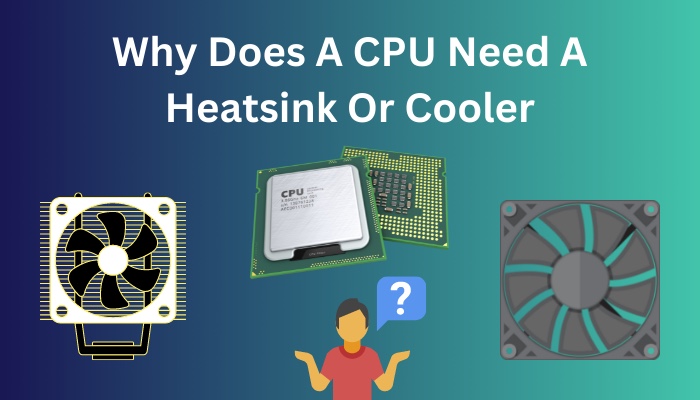A heatsink is a primary part between the fan and the CPU Integrated Heat Spreader (IHS). However, there are times when you ponder whether your CPU can run for a specific amount of time without a cooler.
Another question that people have is if it is safe to operate their CPU without a heatsink and whether doing so will harm it.
Let’s find out!
See our most recent post on CPU cooler won’t install.
How Long Can You Run a CPU Without a Heatsink?
A CPU can run without a cooler for around one minute and sometimes a bit longer. It depends on the room temperature and the mounting pressure on your processor backplate. Because these factors also influence how long you can operate your CPU without a heatsink.
Every motherboard contains a safety function that automatically turns off the computer when the CPU reaches its maximum temperature.
As a result, without a cooler, the CPU quickly reaches its maximum temperature and the system shuts down after a certain amount of time.
The room temperature and casing air flow system also plays a role when you run your CPU without a heatsink. Because the only cooling solution available at that time is room temperature and the cooling fan of the casing.
Also, certain motherboards included a function that detected the mounting pressure of a CPU cooler. If the Motherboard sensor does not detect any heatsink pressure, the computer will not boot up.
Also, check out our separate post on can I start a PC without a CPU cooler.
Why Does a CPU Need a Heatsink or Cooler?
A CPU needs an air cooler to maintain a lower temperature, disperse the processor’s heat and keep it cool.
A CPU is the main component of a computer system. For that reason, a computer processor performs most of all operations and processes. That’s why a processor quickly heats since it performs so many processes simultaneously.
As a result, to reduce the temperature, a CPU cooler is required. Otherwise, the heat can harm your CPU and other components.
The CPU cooler base plate sits on top of the Integrated Heat Spreader of the CPU. To improve conductivity, a thermal compound is put between the base plate and the heat spreader.
When a CPU gets heated, the temperature transfers from the processor heat spreader to the heatsink base plate. The heat is then pushed out by the fan, which is typically found on top of the cooler.
That is how a CPU cooler removes heat from a CPU while keeping it at an optimal temperature.
Here’s a complete guide on how to know if CPU cooler is compatible with Motherboard.
FAQs
how long can a CPU run without thermal paste?
If the thermal paste is not used between the CPU and the heat sink for one minute, it will eventually overheat and fail.
How long can a CPU run without a fan?
Today’s high-end CPUs will only last a minute or two without a fan.
Can you test a CPU without a heatsink?
Without a heatsink, there will be nothing for the heat to dissipate, and it will simply spread along the CPU’s IHS (Integrated Heat Spreader). As a result, you cannot execute a test without a cooler.
At what temperature do PC parts get damaged?
If your computer’s temperature is over 80 degrees C (176 degrees F), it might damage your computer.
Conclusion
You already get the idea from my article about why you wouldn’t run your CPU without a heatsink.
Although the risk of destroying your CPU is negligible, I recommend avoiding this type of experiment on your own.
If you have any thoughts or feedback regarding this matter, leave a comment below.



